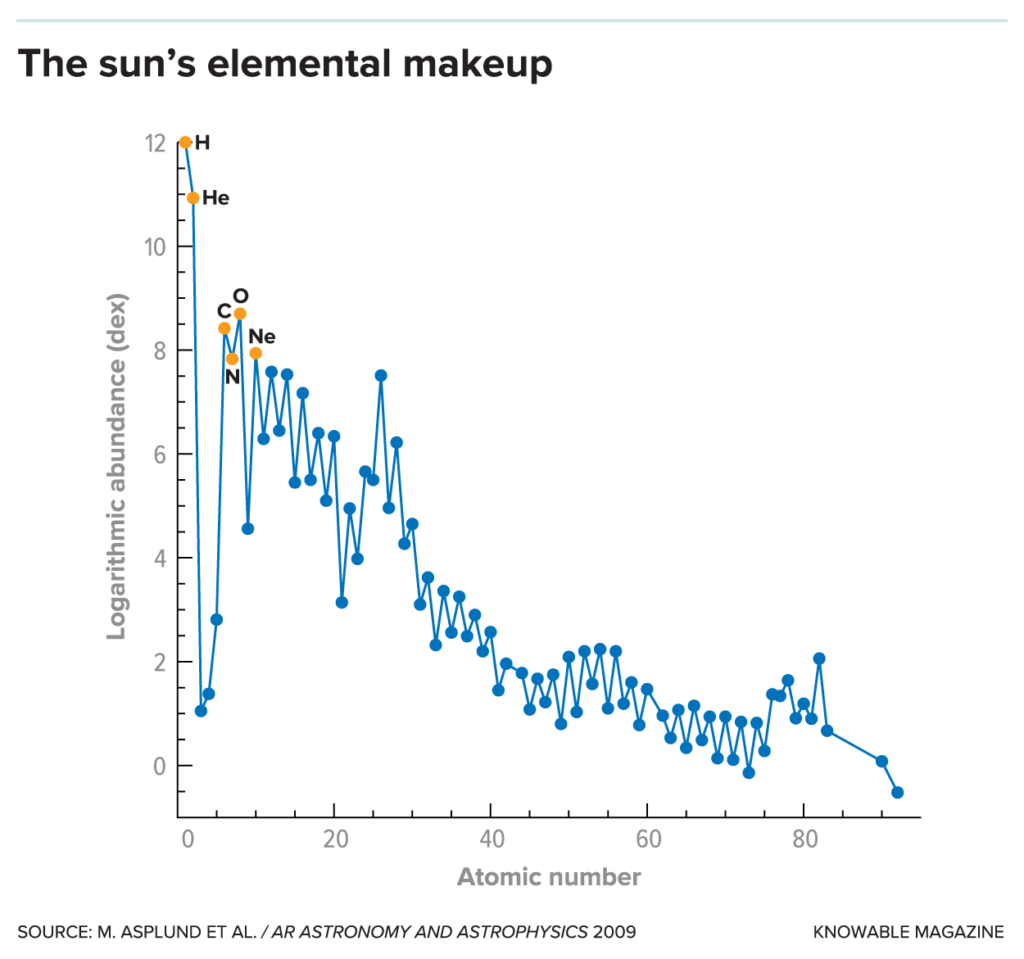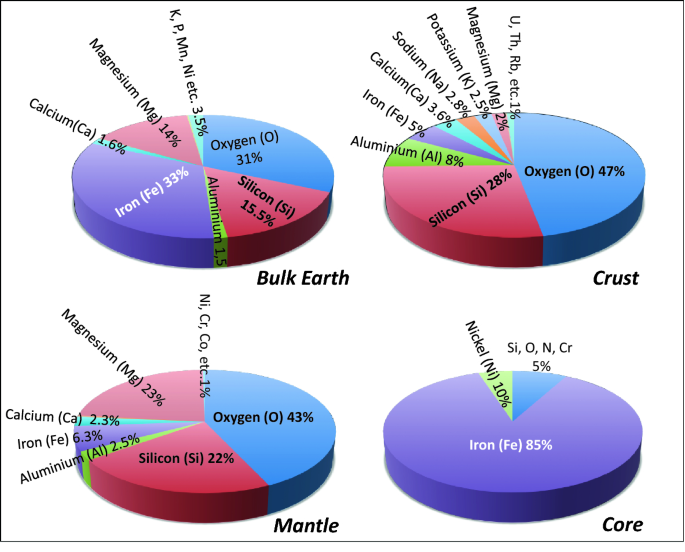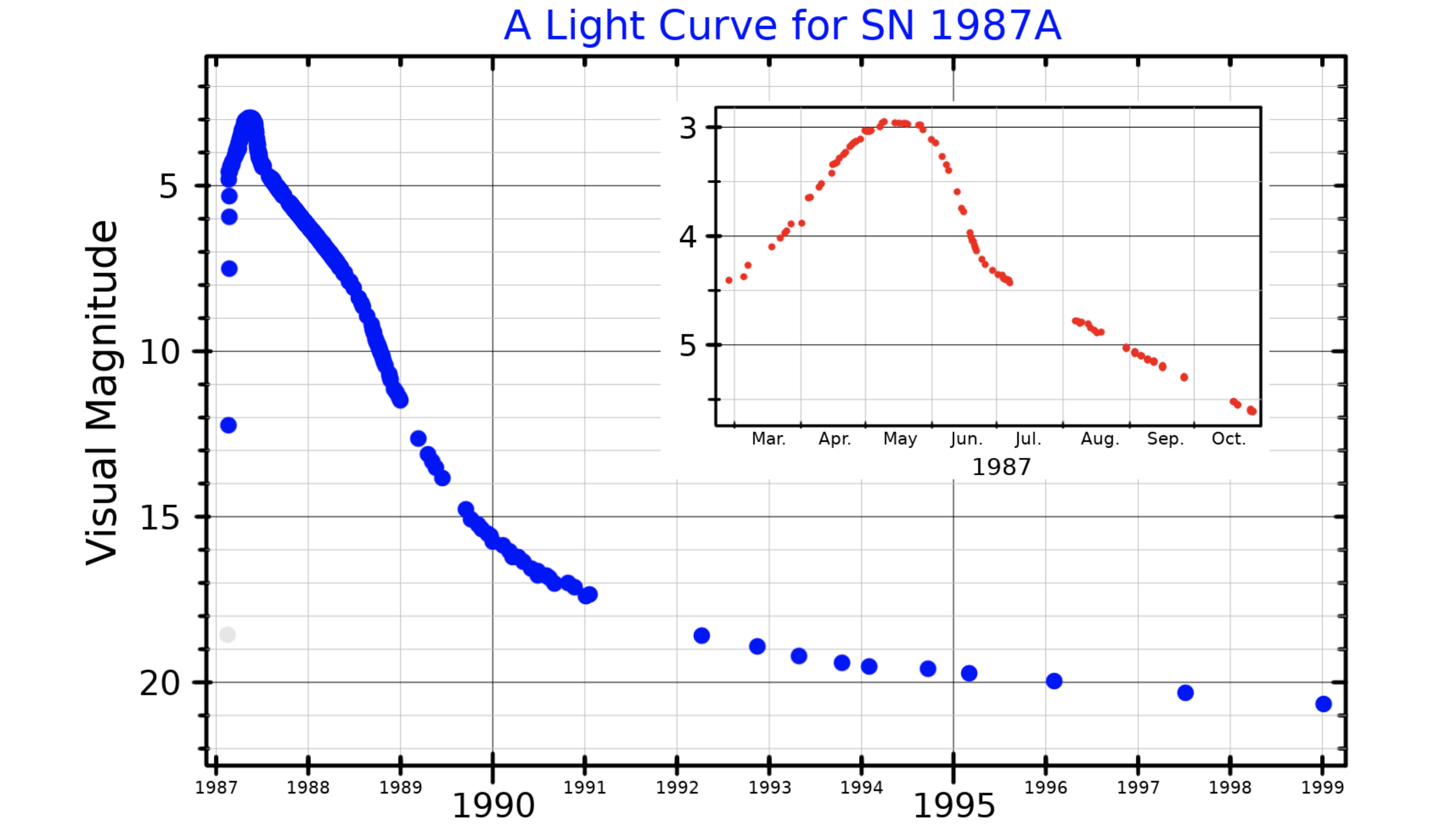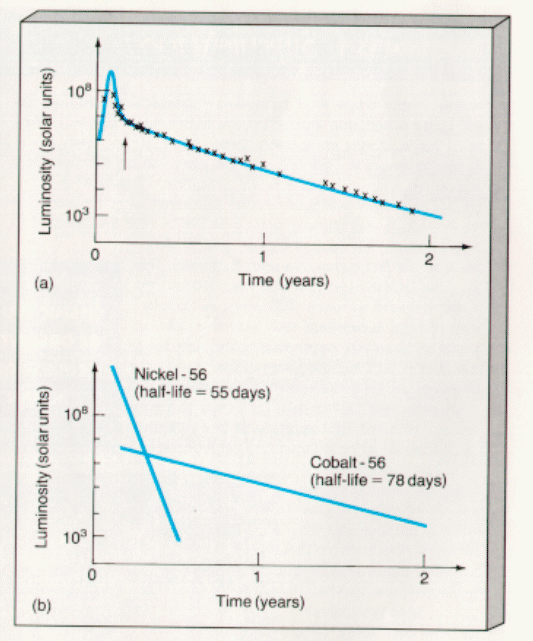
The Universe today is primarily hydrogen and helium. When formed, the Big Bang produced mainly hydrogen and helium with trace amounts of some lighter elements and no appreciable production of carbon, nitrogen, oxygen, iron, magnesium, silicon, ... , and other elements heavier than iron. Today when we look at the chemical composition of the Sun, we find:

Although the Sun is still dominated by hydrogen and helium, there are large amounts of heavier elements. This is even more pronounced for the Earth:

Where did elements heavier than helium come from?
B. Nucleosynthesis
The
pre-supernova
star has an
onion-skin structure
-- an iron core surrounded by various layers of material.
The prediction is that:
<
p>
What about elements heavier than iron? Well, the SN outburst is a strong source of neutrons. This is a key point since there is no electrical barrier for the addition of neutrons to nuclei. This means that one can build up very massive elements (through the r-process and s-process) if there are sufficient neutrons. SN are good sites for high neutron fluxes.

The understanding is that the heavy elements beyond iron are produced by the r:-process and s-process.
C. Test of the Picture
SN1987A offered a nice test of this picture. It used to be thought that the light curves for Type I and Type II SN were grossly different in that the luminosity of a Type II SN

It turns out that our ideas changed (in no small part due to SN 1987A). SN1987A was not the typical Type II SN, but it was clearly a Type II SN based on the fact that its progenitor was SK -69 202. So, when it didn't show the plateau phase and then went into a prolonged state where it continued to shine for much longer than expected, if it exploded (was formed hot) and simply cooled as it marched outward as did the typical Type II SN.
The SN 1987A light curve actually looked like

A natural source for this energy is nuclear power. In particular, tapping the energy contained in the decay of radioactive elements. This picture works very nicely we have that
At even longer times, the analysis gets messier but there are indications that other radioactive decays like 57Co → 57Fe may be important. This picture works very nicely,

An interesting by-product of this understanding why the lightcurve of SN1987A looked as it did, was that we were able to make firm predictions for how much nickel (an iron peak element) and eventually iron was produced in the explosion. This allowed us to pin down our models, calibrate them, and allowed us to make detailed predictions on the elemental yield of the explosion! The results of SN1987A corrborated many assumptions we made about nucleosynthesis and also helped steer us into other promising directions.
